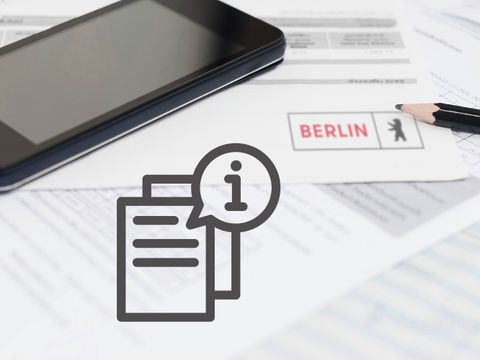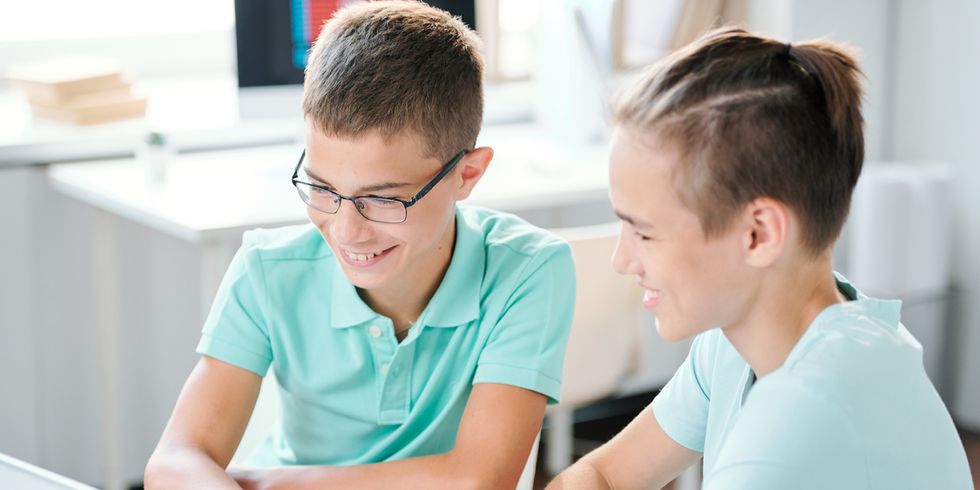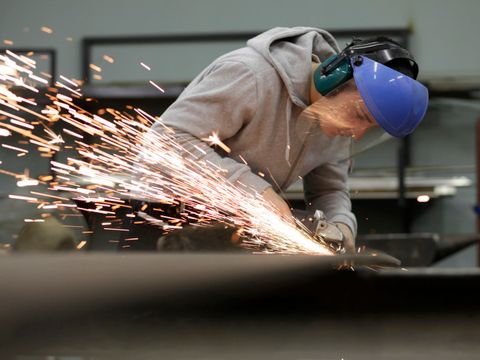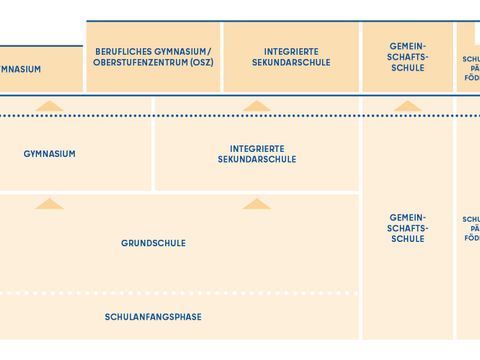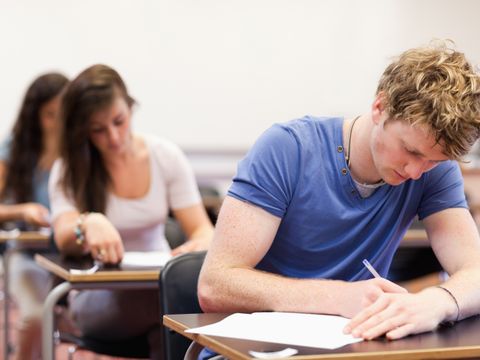Since students with different strengths, skills and inclinations attend an integrated secondary school, offerings at different levels are also necessary for the best possible support.
The schools can decide for themselves how instruction is organised depending on requirements and support options. These include, for example, courses with different performance levels or joint study groups with tasks at different levels.
Class frequency
The class size of 25 or 26 students ensures the best conditions and good academic success. The class frequency can be even lower through additional support hours, for example, for students whose language of origin is not German or who do not have learning resources.
Schedule
With 31 hours a week in grades 7 + 8 and 32 hours in grades 9 + 10, the schedule at the secondary school is two hours less per week than at a Gymnasium. However, the integrated secondary school students receive even more instruction than the Gymnasium students, since they have a whole school year more time until the Abitur.
All-day school
All secondary schools are all-day schools: there are binding educational and care offerings for all students until 4 p.m. In the open form, offerings such as sports, theatre, art, music or student work time are available after the end of instruction. In the bound form, these offerings are integrated into everyday school life.
To this end, the secondary school cooperates with youth work and youth welfare sponsors. The school can decide how is organises its all-day programme and how it uses staff and financial resources.
One school for all qualifications – from vocational training to the Abitur
The integrated secondary school enables its students to obtain the following qualifications after passing exams:
- Certificate of vocational education (BBR),
- Advanced vocational qualification (EBBR) and
- General certificate of education (MSA).
The first general school leaving qualification, the Bildungsreife, is achieved at the end of the ninth or tenth grade.
In addition, the secondary school, like the Gymnasium, offers the transition to the upper secondary school after the tenth grade. If the ISS does not have its own upper secondary school, it enters into a cooperation or an alliance with another school.
In order for a student to be able to change to the upper secondary school, the final grades must be good after the tenth year and the intermediate school leaving qualification must be passed. The upper secondary school at the integrated secondary school usually lasts three years, but with particularly good performance it can be completed in two years.
